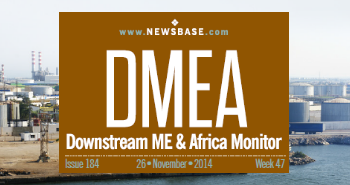Petrochemical output up 3.5% in Iran

A report from the Iranian government released February 2 has revealed that the country’s petrochemical production was able to reach 96.3mn metric tonnes from March 21 to December 20 2024 – an increase of 3.5% compared to last year, according to a report by Iranian news outlet Press TV.
The document showed Iranian petrochemical plants were able to export $8.5bn worth of products between April and December, with $3.3bn spent on importing chemicals and catalysts essential to the manufacturing process. Additionally, it highlighted that exports of the commodity had also increased by 7% in volume.
Alongside increases in petrochemical production and exports, the report also highlighted numerous new projects being undertaken in the country, with the Iranian government having sped up the process of implementing new large-scale infrastructure projects in the Pars Special Energy Zone in Asaluyeh – a port city containing multiple large petrochemical plants located in the South.
There projects include repair works on 17 docks at the port, according to Press TV.
With Iran under continuous sanctions from the US, petrochemical production has been a saving grace for the country, allowing it to maintain its hard currency needs since 2018 when restrictions were first introduced.
Notably, Iran has been able to increase petrochemical production and exports despite suffering power cuts and gas shortages throughout 2024, and plans are currently underway to invest an additional $12bn to construct yet more petrochemical projects in the future.
Such plans were first revealed in May 2024, when the National Petrochemical Company (NPC) Head and deputy oil minister Morteza Shahmirzaei announced that the country would be developing 15 small and large-scale petrochemicals projects, which would see the total number of petrochemical production units in the country rise to nearly 80 – allowing the country to achieve 100mn tonnes of petrochemical production capacity by the end of 2024.
For this to run successfully however, Iran’s petrochemical industry has aimed to inject significant investment into its upstream sector too in a bid to secure reliable and sustainable feedstock, with Shahmirzaei emphasising that the petrochemical industry in the country accounted for around 28% of the region’s petrochemical capabilities and 2.7% of the world’s entire petrochemical capacity last year.
As of 2024, petrochemical exports constitute around 33% of the country’s non-oil exports, with the resource playing a central part in the country’s economy – being its second-largest industry after the crude oil sector. According to previous comments from Shahmirzaei, Iran’s NPC aims to “increase its annual petrochemical production capacity to 200mn tonnes over the next 10 years”.


Follow us online